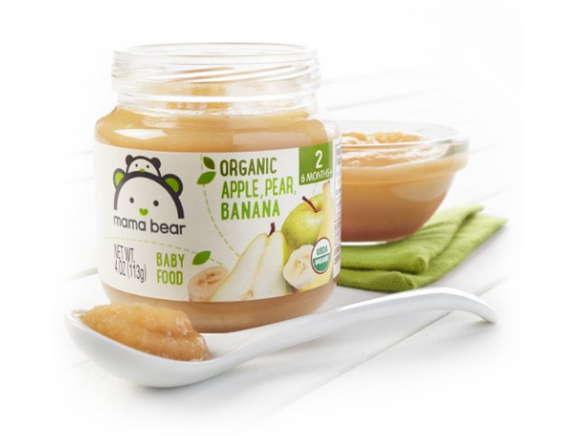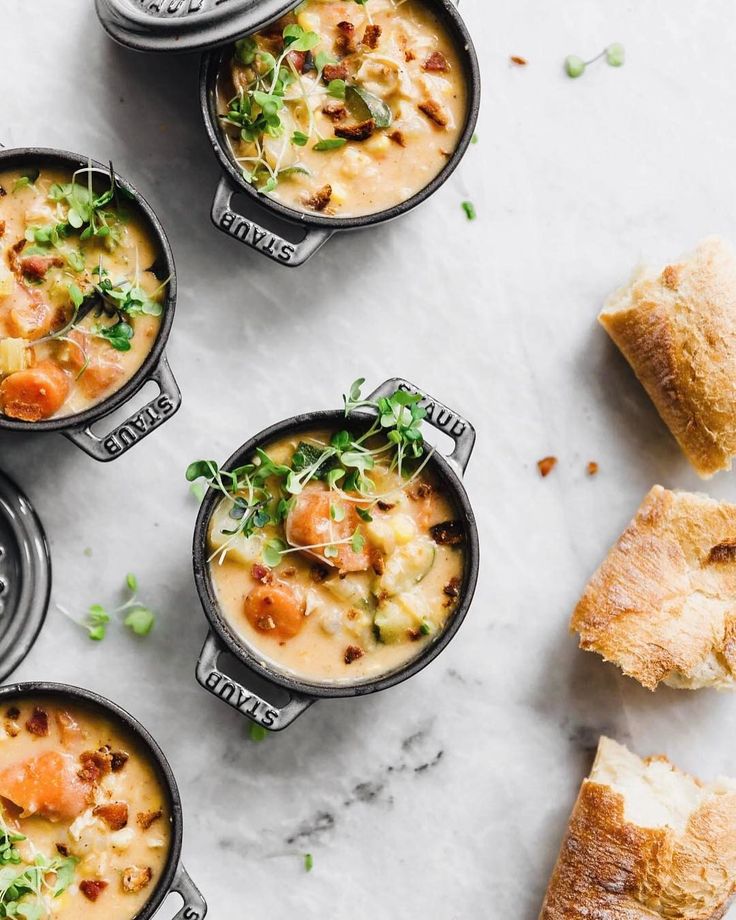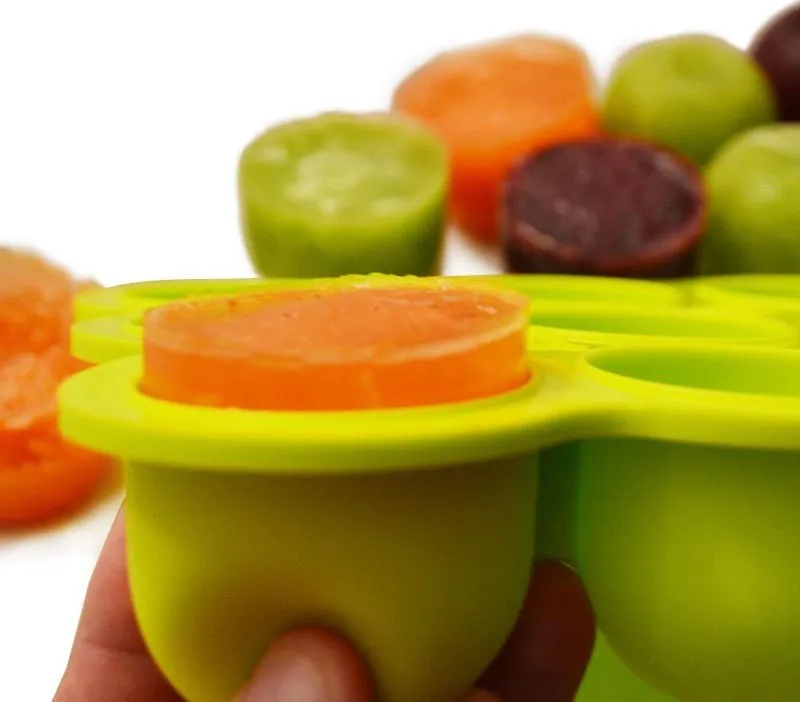How small to cut up baby food
How to Cut Foods for Baby-Led Weaning
You’ve probably seen photos online of babies practicing baby-led weaning, chomping down on a whole carrot or grasping raw apple slices. But, is this safe?
In the case of the raw carrot and apples, nope. But, baby-led weaning certainly can be safe, if you know how to cut and cook foods properly.
Baby-led weaning, or baby-led feeding as I prefer to call it, means that babies feed themselves finger foods as soon as they start solids. But it isn’t anything goes. Here’s how to make sure that the foods you give your baby are safe and easy-to-eat for your baby’s developmental capabilities. Because if your baby can’t pick up the food, then she can’t actually eat it!
And these guidelines work for any finger foods, even if your baby is still eating some purées (which is just fine, by the way!).
Size and Shape
At around 6 months — Most babies just starting solids haven’t developed their pincer grasp (thumb and forefinger) yet. So to pick up foods they grasp them with their whole palm. Since you want your baby to still access the food while it’s in her palm, it’s best to cut food into long, thin sticks. Think about the length and width of your pinky finger, and check out the photo above from Baby-Led Feeding for some ideas.
Other than choking hazards and honey (which you should never give to a baby under age 1), most foods are fair game at this age, including meat, poultry, cheese (shredded), and allergens like eggs, nuts (never whole, but a little smooth nut butter stirred into a purée or spread on toast), and fish.
Toasts are another excellent vehicle for introducing new foods and flavors. Because while we don’t want foods to be too hard (see below), we also don’t want them to be too soft and gummy. Commercial bread can be difficult to pick up and can turn into a ball of mush in a baby’s mouth. But, lightly toasted bread is ideal for self-feeding. Here are 15 of my favorite toast toppings for babies.
And remember that much of eating at this early stage is about your baby exploring–touching, smelling, and yes, tasting. But don’t be alarmed if it seems like little of the food is actually making it into her tummy. Self-feeding takes a lot of eye-hand coordination, and that’s an ability your baby is still developing.
At around 8-10 months — When babies develop their pincer grasp start cutting foods into small pieces, about chickpea-sized. And for small round foods like chickpeas or blueberries, smash them lightly before serving. It’s great for babies at this age to practice their pincer grasp, but it’s also A-OK to continue serving food in sticks like you did when he was younger. The photo above is also from Baby-Led Feeding.
Some of my other favorite single-ingredient foods at this stage include chopped hard-cooked eggs and small pasta shapes.
This is also a good time to begin offering your baby a spoon along with thick soups or mashes. It will take practice for her to get the hang of eating with the spoon, but you can pre-load the utensil to start, and of course, practice makes perfect.
It will take practice for her to get the hang of eating with the spoon, but you can pre-load the utensil to start, and of course, practice makes perfect.
Texture
At all ages, foods should be soft enough that you can smash them with gentle pressure between your thumb and forefinger. This means no raw carrots, apples, nuts, or tough chunks of meat. For vegetables, this usually means steaming them, roasting them, or cooking them in an Instant Pot. Meat should also be very, very tender. Here’s my guide to cooking meat for babies.
Remember, to err on the side of caution with baby-led feeding and always stay with your baby while she’s eating. Then enjoy the show!
Looking for more baby-led weaning ideas and family feeding tips? Sign up for my newsletter! As a thank you, I’ll send you three of my favorite healthy smoothie recipes for the whole family. I look forward to being in touch!
Photos by Lauren Volo.
Jenna Helwig
[email protected]How to Cut Food for Babies and Toddlers
It’s possible to make it easier for kids to eat the food we offer them simply by making sure it’s cut into appropriate sizes. This can help reduce frustration, picky eating, and food waste—and the potential for choking risks. This post has all of my best tips for how to cut food for babies and toddlers!
How to Cut Food for Babies and Toddlers
Food can be slippery and hard to pick up. It can be chewy, tough, sticky, or a whole host of other textures. It can help to greatly reduce frustration at mealtimes if you consider a few basic tips when cutting food for kids. The principals of this are really straight forward, but I’m going to share a lot of visuals since I know the real life practice of this can get confusing!
How to cut food for little kids changes as they progress through the stages of learning to eat, so remember that this is a process.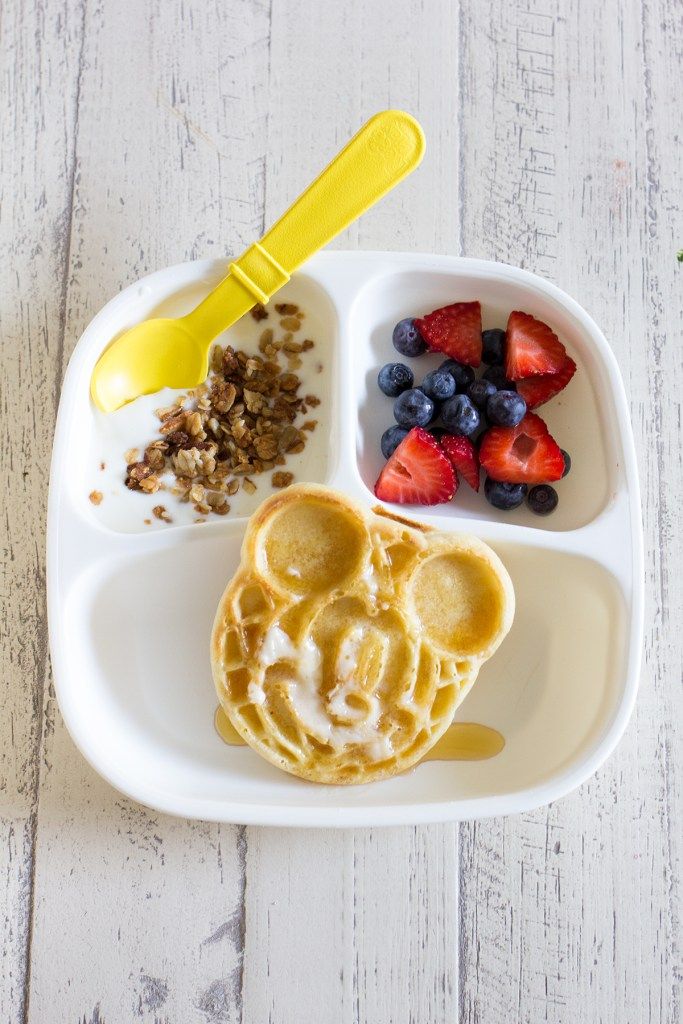
Your toddler won’t eat? Help is here!
Sign up for our email updates to get tips and ideas sent to your inbox.
Please enable JavaScript in your browser to complete this form.Email *
Comment
How to Cut Food for Baby Led Weaning
If you’re starting solids with the Baby Led Weaning style, you’ll want to make sure that the food is soft (it should easily squish between your fingers) and be cut at least the size of your finger. This will help ensure that baby can easily pick it up, yet be unable to put the entire piece into her mouth.
TIP: Find my Ultimate Guide to Baby Led Weaning here.
Tips for Cutting Up Finger Foods for Babies
When babies are about 9 months old, they develop the “pincer grasp”, or the ability to pick up smaller pieces between two fingers. At this age, you can start to serve very soft, squishable finger foods that are about the size of a pea or two.
TIP: Find my full list of Early Finger Foods for Babies here.
How to Serve Raw Veggies to Toddlers
Offering raw veggies to kids can be challenging since many are hard and take a lot of work to chew. And big chunks of raw veggies like carrots can be choking hazards. To stay safe and give the kids a chance to practice with the new textures, try:
- 12/14 months: Start with shredded raw veggies like carrots, cucumbers, bell pepper, and lettuce. (You can soften the carrots for a few minutes in very hot water if desired.)
- 16/18 months: Proceed to very, very thin slices (paper thin!).
- 20/24 months: Gradually offer slightly thicker pieces around, but they should still be thin and less than 1/4-inch thick.
- 2 years: Try offering small diced pieces of bell pepper and cucumber, though some kids may still do better with larger, thin pieces.
- 4+ years: Kids may be able to safely chew a big piece of raw carrot or a whole baby carrot.
 (This is a really tough texture, so try to avoid it for a while.)
(This is a really tough texture, so try to avoid it for a while.)
How to Cut Sandwiches for Kids
Bread can be a challenging texture for kids, especially when there are other textures in the middle of a sandwich. Progressing through a few phases can make this easier and help avoid frustration.
- 6+ month: Serve lightly toasted finger-size or larger pieces of bread for baby to gnaw on.
- 9+ months: Dice bread into very small pieces. Moisten it with apple butter, baby food puree, or another moist spread as needed to help baby move it around in their mouths.
- 14/16 months: Stick pieces are great for this age to help kids practice taking bites.
- 20/22 months: Sandwich quarters are a great size for one year olds and are a nice size for little hands to hold.
TIP: Find my favorite Kid’s Sandwiches here.
How to Serve Apples to Babies and Toddlers
Start with applesauce and Roasted Apples for babies, then shredded apple to thin matchsticks to very thin slices through the one year old year.
How to Serve Bananas to Babies and Toddlers
Start with a BLW-style banana (leave a little of the skin on to act as a less slippery handle) and Banana Puree, then move to small pieces around 9 months, and larger pieces around 16 months. Kids may also be able to bite whole bananas after 12 months since they are so soft.
How to Serve Broccoli to Babies and Toddlers
Start with Mashed Potatoes with Broccoli or a big BLW-style piece, then move to smaller very tender pieces around 9 months, and gradually increase the size through the one year old year.
With all of these, you want the florets to be very soft so they are easy to chew.
Fork making “bite marks” in pearHow to Help Kids Learn to Take Bites
It’s common for one year olds to stuff a lot of food into their mouths at once, so we sometimes need to be very deliberate about teaching them to take bites. You can use a fork to make a “bite mark” so they can see where to try to put their teeth. You can also give them larger pieces of food that they physically wouldn’t be able to fit into their mouths so they sort of have to take a bite.
Sit with the kids during meals, if you can, and show them how you take bites. This is a normal phase and kids usually get the hang of it if we give them time to learn and practice.
Try cutting foods in new ways to keep thing interesting.Best Tips for Cutting Food for Kids
- Start with finger-size pieces at 6+ months for baby led weaning.
- Transition to pea (or two peas) size pieces around 9 months when kids can pick up smaller pieces between their fingers.
- Offer larger pieces so they can practice taking bites around 16/18 months.
- For raw veggies and hard fruits (like apples), start with shreds, then matchsticks, and paper thin pieces.
- Save baby carrots and other very hard raw veggies until age 4+.
- Find my favorite baby First Finger Foods.
- Find my go-to toddler Finger Foods.
- Learn more about Serving Nuts to Kids.
- Brush up on the common choking hazards and how to reduce the risk.
Related Recipes
I’d love to know if you have any questions on this or feedback, so please comment below!
This post was first published March 2021.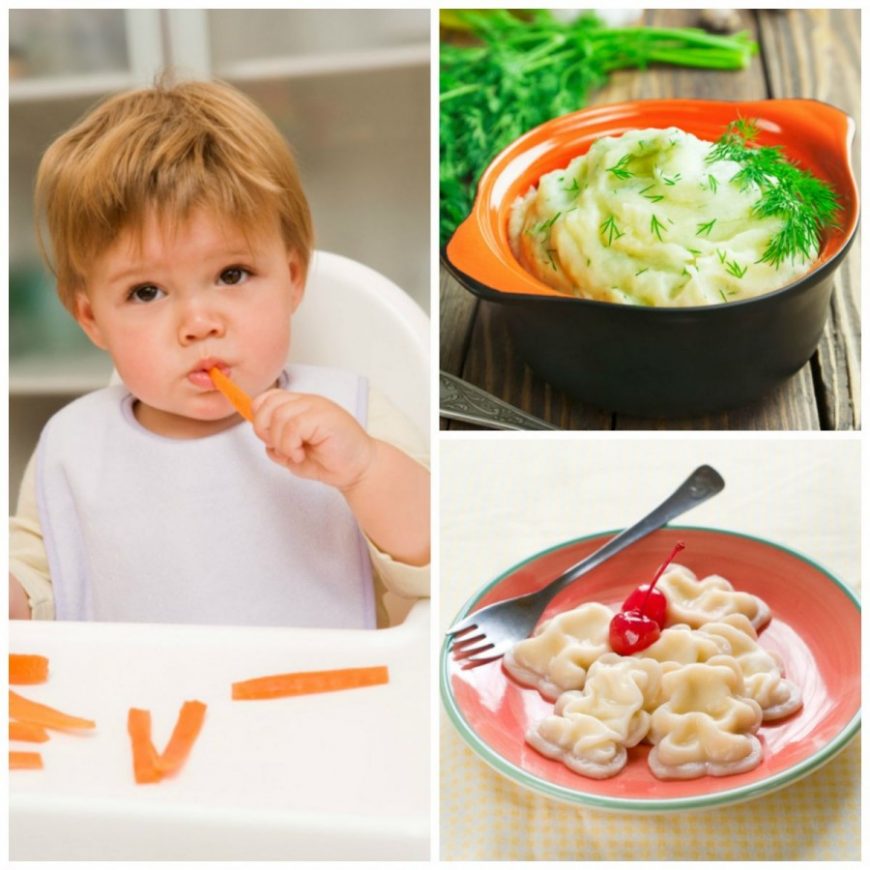
Harm of baby food in jars
Jars with ready-made puree surprise not only with high demand, but also with an assortment. Fruit, berry, vegetable, with meat, cereals, cream - under each brand there are dozens of items. In a previous publication, we talked in detail about 5 reasons for the popularity of baby puree in jars, and today we will consider the likely harm that such food can cause to a child's body.
Nutritionists, pediatricians and parents disagree on this issue. There are three strong arguments against portioned canned food.
Taste different from homemade food.
The difficulty of weaning a child from a homogeneous consistency.
Unpredictable quality.
How does baby food taste in jars?
Even if a characteristic pop is heard when opening the container, parents still have to taste the food they offer their child. Many are surprised at how strange the content is. It is clear that most purees do not contain salt, sugar, flavoring additives. But they often turn out to be not just bland, but unnatural, too different from those that mothers cook on their own.
But they often turn out to be not just bland, but unnatural, too different from those that mothers cook on their own.
The reason for this is the merciless grinding and intense heat treatment that precedes vacuum packaging. However, it is very difficult to transfer a child from such refined food to a common family table. What will be the taste specificity of food in the first months of complementary foods will determine future preferences and the ability to organize healthy baby food at school age.
The child is too lazy to chew
Baby purees under different brands also differ in consistency. For example, it is convenient to scoop up meat and fish with a spoon, but some even at room temperature remain monolithic, as if fastened with starch. It is not easy to mix such a substance with potatoes or green vegetables. You just have to cut it into pieces with a spoon. But in any case, the food in jars is crushed as much as possible and is a homogeneous mass.
It is good when feeding a baby up to a year old. But later, when enough teeth have erupted, the food should become coarser. Reasonable exercise is very important for the health of the gums and teeth. Ready-made vegetable puree in jars is easier for everyone: parents save time on cooking, and children save energy on chewing. As a result, it turns out that upon reaching the age of two, some kids refuse salads, normal soups, vegetable stews. They still demand to puree dishes, recognizing only the usual consistency.
Adults have many problems. There is not enough time and energy for endless persuasion, you won’t leave your beloved child hungry either, no tricks (decorating dishes, disguise) help. Whims at the table are dangerous. Even if the baby gives in under parental pressure, he has a great chance of choking, swallowing tears along with food.
Another difficulty is that a "homogeneous" diet will be limited. If you pass buckwheat with meat or baked potatoes with chicken through a blender, at the output we get a very viscous, thick mass - completely unappetizing.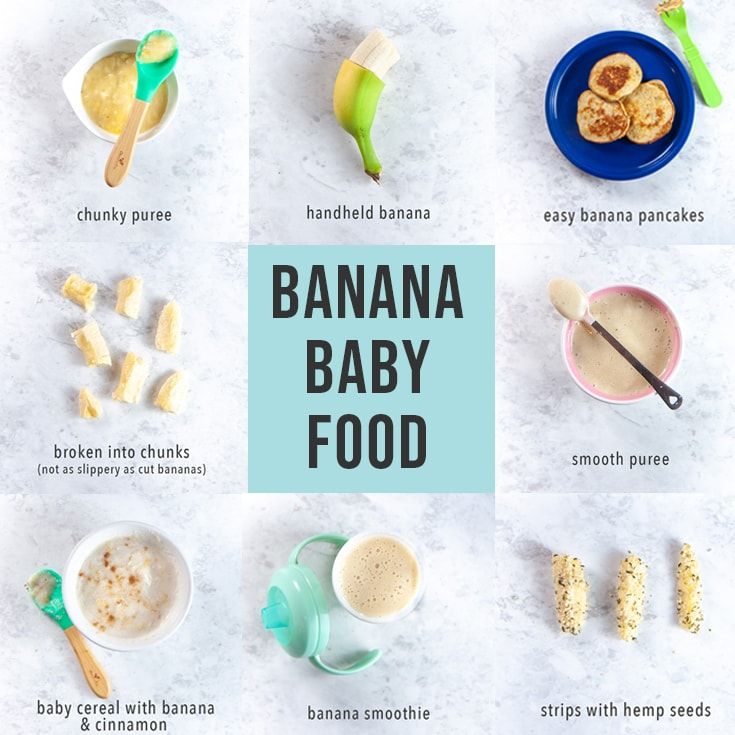 The habit of normal food sometimes comes only with admission to kindergarten.
The habit of normal food sometimes comes only with admission to kindergarten.
You can switch from canned puree to homemade puree from 8-9 months. At first, mix, say, a “canned” zucchini with boiled, grated on a fine grater. Then increase your portion by decreasing the canned portion. This will take about a week. Then, according to the same principle, we grind part of the product on a medium-sized grater, closer to a year - on a large one, or simply knead it with a fork.
Do canned children pass high quality control?
They say that buckwheat is the only crop that has not yet been disfigured by genetic modification. Vegetables abound in various additives for rapid growth and disease resistance, and livestock that will become meat are laced with antibiotics and hormones.
It can be assumed that huge fields or modern farms have been set aside especially for our babies, where they grow ingredients for safe baby food. Those who have their own vegetable gardens know how high the price of a natural product really is, because time and effort are taken into account. And if you add the costs of marketing, packaging, transportation, salaries ... Belief in "eco", "organic", and "100% natural" is rapidly weakening.
And if you add the costs of marketing, packaging, transportation, salaries ... Belief in "eco", "organic", and "100% natural" is rapidly weakening.
And international canning scandals confirm that in a market economy, profit remains a priority. It is worth reading the labels carefully, control the cotton when unscrewing the lid, always mix the contents to make sure there are no foreign objects.
is it possible to eat mashed potatoes in jars and lose weight
Studying the assortment of baby food is amazing: it seems that these babies get the best. Still, modern children can have mango puree for breakfast, eat horse meat with vegetables for lunch, and dine with organic chicken with rice. Why shouldn't adults eat this delicacy too? It turns out that the baby food diet exists and has already gained popularity among Hollywood stars.
Tags:
Lady Gaga
Gwyneth Paltrow
Jennifer Aniston
Diets
How to lose weight in a week
Getty Images
The baby food diet was popularized by Tracy Anderson, an American fitness trainer who has worked with many celebrities. She suggested that those who want to get rid of extra pounds and keep themselves in shape should pay attention to jars of baby puree. Wiz Reeserspoon, Jennifer Aniston, Gwyneth Paltrow and Lady Gaga followed this diet at various times.
She suggested that those who want to get rid of extra pounds and keep themselves in shape should pay attention to jars of baby puree. Wiz Reeserspoon, Jennifer Aniston, Gwyneth Paltrow and Lady Gaga followed this diet at various times.
There are many advantages of such a diet, but such a diet also has enough disadvantages. We figure out what outweighs and to whom such a diet can suit.
How can you lose weight on baby food?
There are several variations of this diet. The strictest option does not involve the use of any other products - only mashed potatoes, no juices, curds and other products. It is optimal to use only mono-products, which means that, most likely, you will have to limit yourself to mashed potatoes for the smallest ones, because jars for older children already contain mashed potatoes from several components.
It is recommended to consume no more than 1200 calories daily. Considering that one jar contains up to 100 kcal, you will need quite a lot of such jars for one day. It is quite possible to lose weight on baby food - following a diet for babies can provide a loss of up to 5 kilograms per week.
It is quite possible to lose weight on baby food - following a diet for babies can provide a loss of up to 5 kilograms per week.
ADVERTISING - CONTINUED BELOW
An easier and simpler option is to substitute baby puree for several meals or use baby food for a quick snack.
THIS IS INTERESTING
Gwyneth Paltrow and other stars whose wedding was canceled on the eve of the celebration
Brad Pitt and Gwyneth Paltrow met on the set of the film "Seven", on the set they began a stormy romance. The couple even had the same style of clothing at that time! The upcoming wedding of two sex symbols seemed like the event of the year, but Brad and Gwyneth unexpectedly parted ways. According to rumors, the reason was the bride's infidelity: she allegedly had an affair with colleague John Hannah on the set of "Beware the Doors Are Closing."
1 of 5
What are the benefits of a baby food diet?
Such a diet can captivate with its simplicity - you don't need to count calories, because all the data is written on the jar. There is no need to waste time on cooking, serving and studying the composition, and the products for babies are so diverse that such a diet cannot be called boring. Do not forget about the quality of the products - baby food meets the highest standards, and therefore definitely does not contain harmful additives, artificial colors and incomprehensible ingredients.
There is no need to waste time on cooking, serving and studying the composition, and the products for babies are so diverse that such a diet cannot be called boring. Do not forget about the quality of the products - baby food meets the highest standards, and therefore definitely does not contain harmful additives, artificial colors and incomprehensible ingredients.
In general, when choosing food for the little ones, you definitely will not buy pizza for babies or baby fries in a jar: the assortment will be healthy and healthy. Take at least mashed broccoli or green peas.
Weight loss on such a diet is more than real: the absence of harmful products, calorie restriction, portions adjusted to the gram will help get rid of extra pounds.
The baby puree diet: diet cons
It is clear that for most of us, baby food as a permanent diet will not work - this system can serve to unload for a week or two. Abuse of a strict version of the diet can harm rather than improve the body.
If you follow such a diet, you will have to eat food without spices - salt, pepper and other seasonings are not added to monocomponent purees. Surviving more than two weeks on unleavened food is not so easy.
In addition, it is worth remembering that protein, whole grains, fiber and proper fats enriched with polyunsaturated fatty acids are not enough in children's products - they are quite enough to provide everything a baby needs, but they are not enough for an adult. Long-term adherence to such a diet can lead to digestive problems.
For those who have already experienced certain diseases of the digestive system, the use of baby puree in large quantities should be completely abandoned. Also, the diet is not recommended for pregnant and lactating women, those who suffer from anemia, have problems with pressure.
Another important factor is the high cost. A two-week sitting on baby puree will cost a pretty penny, because you will have to eat the contents of 10-15 cans every day, which will cause both the body and the wallet to lose weight at the same time.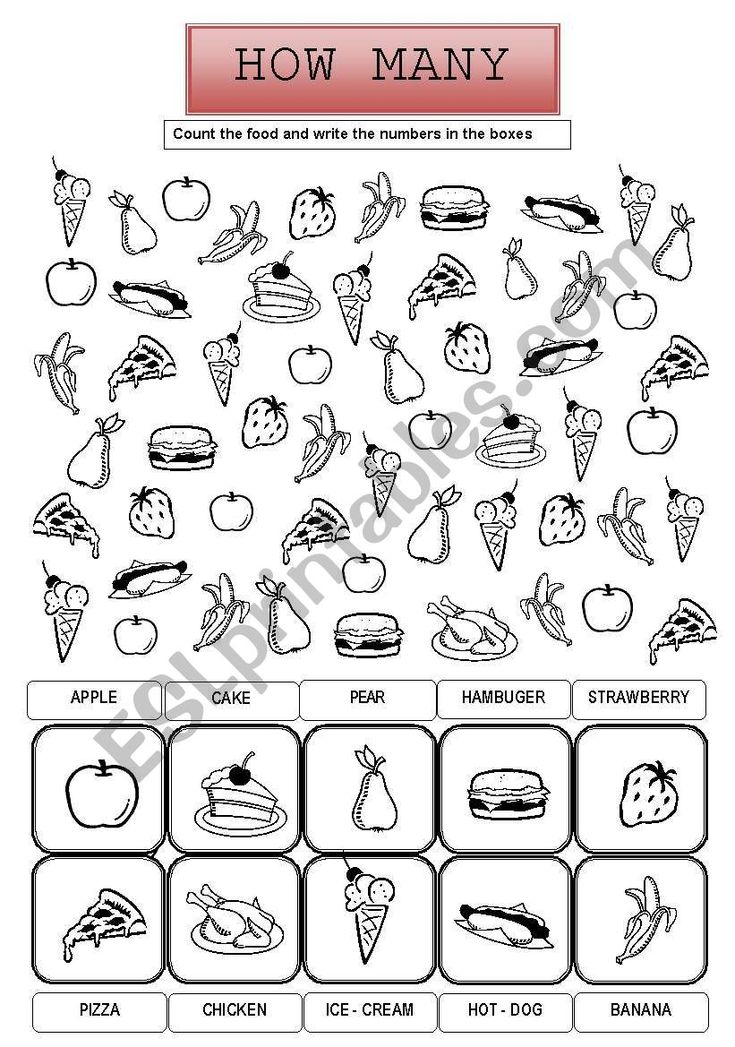 We also note the environmental aspect - such a huge number of empty jars will quickly accumulate in your house that the question of their proper disposal may arise.
We also note the environmental aspect - such a huge number of empty jars will quickly accumulate in your house that the question of their proper disposal may arise.
Baby puree: yes or no
Feedback from those who have already tried the baby puree diet is mixed. Some say that such a diet really allowed them to throw off those extra pounds, while others note a constant feeling of hunger for one or two weeks of “canned” nutrition. Many simply yearned for "adult" food, wanting to chew on pieces of food and not only absorb certain foods, but enjoy the very process of eating.
Those who nevertheless decide to try such a diet should not forget that it is not necessary to follow it for more than two weeks. It is important to drink enough water, and if necessary, add at least a little fiber to your diet. If any health problems associated with such nutrition occur, the diet should be stopped immediately, and it is best to consult a nutritionist before starting a weight loss course.





